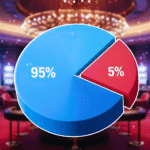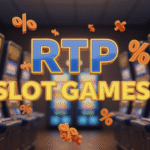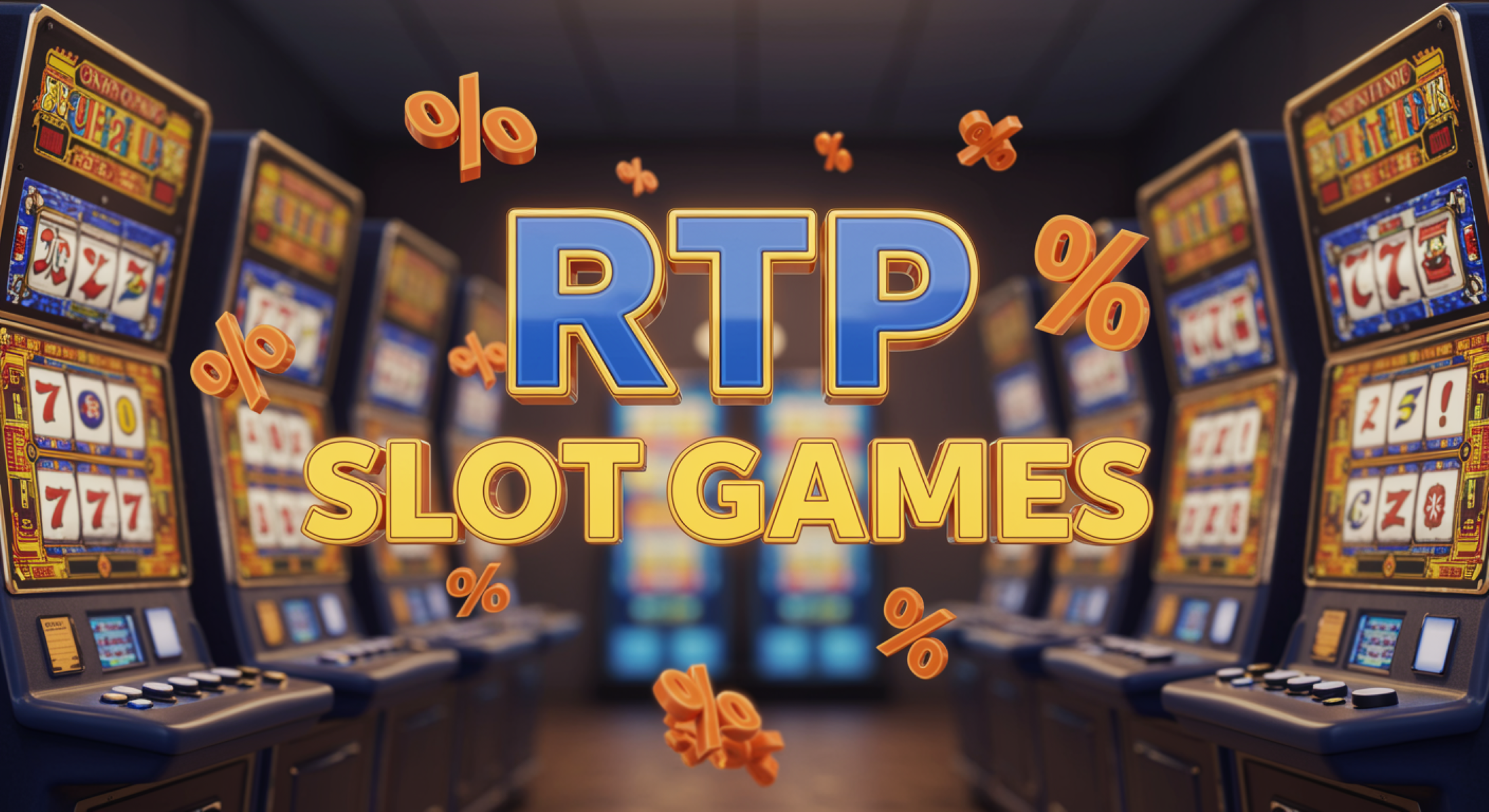Let’s start with the basics: RTP stands for “Return to Player.” Think of it like this — RTP is a percentage that tells you how much money a slot game is expected to pay back to players over time. For example, if a slot has an RTP of 96%, it means that for every ₹100 wagered, the game is programmed to pay back ₹96 in the long run. Sounds important, right? Because it is. Especially for Indian players exploring online casinos, understanding RTP helps you make smarter choices.
Understanding How RTP Works in Slots
RTP (Return to Player) is an important concept when it comes to playing slots. It’s a percentage that tells you how much of the money wagered on a slot game is expected to be returned to players over a long period. However, it’s important to understand that RTP doesn’t guarantee any specific outcome for individual sessions or spins. Instead, it’s an average figure calculated over millions of spins. Essentially, the higher the RTP, the better the theoretical payout over time.
But here’s the key takeaway: RTP isn’t a reflection of what you’ll win every time you spin. Slots are built on random number generators (RNG), meaning that the results of each spin are completely random. While the RTP gives you a general idea of the long-term payout, in the short run, anything can happen. You might hit a big win, a small win, or, at times, no win at all. This unpredictability is what makes slots exciting — but also why understanding RTP alone isn’t enough to determine your success in the game.
The RTP is calculated by taking into account how much money the machine returns to players in the long run, but the casino’s edge also plays a role. This edge is the opposite of RTP and represents the percentage the casino expects to keep. For example, if a slot has an RTP of 96%, that means the casino expects to keep 4% of all the money wagered. This is referred to as the house edge. So, in this example, for every ₹100 wagered by players, the casino theoretically expects to keep ₹4 over time.
Along with RTP, another important factor to consider is the volatility or variance of the slot game. Volatility determines how often and how much a slot pays out. High volatility games may have bigger wins, but they’re less frequent, while low volatility slots tend to pay out smaller amounts more often. So, when choosing a slot, it’s crucial to consider both RTP and volatility to match your playing style and bankroll preferences. A high RTP is appealing, but understanding how the game’s volatility works in tandem with that can greatly affect your experience.
RTP vs. Volatility: What’s the Difference?
RTP and volatility are two terms that are often confused by players, but they refer to different aspects of a slot game. To clarify:
- Low Volatility: Frequent Small Wins
- These games offer frequent, smaller payouts.
- You’ll see more regular wins, but they’re typically smaller in size.
- Low volatility slots are ideal for players who prefer a steady stream of action without the risk of large losses.
- The RTP in low volatility games is usually higher since it returns more regularly.
- Medium Volatility: Balanced Payout Frequency and Size
- Medium volatility slots strike a balance between frequent wins and bigger payouts.
- You can expect a mix of smaller wins and occasional larger wins.
- These games appeal to players who want a blend of excitement without the risk of going too long without hitting a decent win.
- RTP may still be competitive, but payouts are more spread out, offering both risk and reward.
- High Volatility: Rare, Big Wins
- High volatility slots have fewer wins, but the ones you do hit tend to be significantly larger.
- These games offer bigger rewards, but you’ll likely experience long dry spells between big payouts.
- High volatility slots are best for players who have a higher risk tolerance and are looking for a shot at a big win, even if it takes time.
- The RTP might still be high, but the payouts are less frequent, meaning you could go for long stretches without winning.
Why RTP Matters More Than You Think
| RTP Percentage | Bankroll Impact | Frequency of Wins | Session Duration | Chances to Win |
| Low RTP (85%-90%) | Drains bankroll faster | Wins are rare or small | Shorter play sessions | Fewer chances to win |
| Medium RTP (91%-94%) | Balanced bankroll impact | Moderate win frequency | Moderate session duration | Balanced chances to win |
| High RTP (95%-98%) | Bankroll lasts longer | Frequent wins, often small | Longer play sessions | More opportunities to win |
| Very High RTP (99%+) | Slow bankroll depletion | Frequent payouts, varying sizes | Very long play sessions | High chances of winning |
| Progressive Jackpot RTP (90%-95%) | Bankroll drains faster unless jackpot hits | Very rare big wins | Sessions are short unless jackpot triggered | Extremely low chances to win |
Indian Players and the Rise of Slot Gaming
India’s gaming culture has exploded in recent years, with online slots emerging as one of the most popular forms of entertainment. Why? Because they’re simple to play, visually appealing, and offer fast-paced action that appeals to the growing number of online gamers in India. Whether on mobile or desktop, players can enjoy quick spins and exciting features, making slots the go-to game for anyone looking for a casual yet thrilling gaming experience. Plus, with the wide variety of themes available, there’s a slot for just about everyone.
However, despite their growing popularity, many new players dive into slot games without fully understanding some essential aspects, like the Return to Player (RTP) percentage. It’s easy to get caught up in the flashing lights, bonus rounds, and the promise of big wins, but not considering RTP is like jumping into a rickshaw without knowing where it’s going. Without awareness of RTP, players might end up spending more than they expected, with fewer returns. This lack of understanding can lead to frustration, especially when a seemingly “exciting” game doesn’t deliver the expected results.
If Indian players take the time to familiarize themselves with RTP, they can drastically improve their slot experience. By choosing games with higher RTPs, they’ll have a better chance of getting more back from their wagers over time. Essentially, RTP gives players an understanding of what to expect from a slot in the long run, which helps to better manage their bankroll and enjoy the game without unnecessary stress.
As India’s online gaming market continues to grow, it’s important for players to arm themselves with knowledge. RTP isn’t the only factor to consider, but it plays a crucial role in ensuring that players are getting the most out of their time and money. With just a bit of RTP awareness, Indian players can level up their slot gaming experience, making it not only more enjoyable but also more rewarding. Whether they’re spinning for fun or aiming for a big win, a little knowledge can go a long way.
High RTP Slots vs. Low RTP Slots: Real-Life Examples
Let’s take a look at two slot games to better understand how RTP affects gameplay and returns. The difference in RTP can have a significant impact on your experience and potential returns, especially in the long run.
- Starburst
- RTP: 96.09%
- Volatility: Low
- Notes: Starburst is a popular game among beginners due to its simple mechanics and frequent small wins. The RTP of 96.09% means that players are likely to get back a decent portion of their wagers over time, making it a good choice for those who want a steady and enjoyable experience with fewer risks. The low volatility ensures that wins come more frequently, though they may be smaller.
- Mega Moolah
- RTP: 88.12%
- Volatility: High
- Notes: Mega Moolah is famous for its massive progressive jackpot, which has made millionaires out of lucky players. However, the RTP of 88.12% is on the lower end, meaning players are more likely to experience losses over the long term unless they hit the jackpot. The high volatility means big wins are rare but can be life-changing when they do occur.
- Blood Suckers
- RTP: 98.00%
- Volatility: Low
- Notes: Blood Suckers is one of the highest RTP slots available, offering a generous return of 98%. This makes it a great choice for players looking for long-term value and better chances of recouping their wagers. The low volatility also means you can expect frequent, smaller wins, which helps keep your bankroll healthy while enjoying the game.
- Book of Dead
- RTP: 94.25%
- Volatility: High
- Notes: Book of Dead is a popular slot game with an exciting theme and a good potential for big wins. However, its RTP of 94.25% is lower than some other options, and its high volatility means wins can be rare, though larger when they do occur. Players who enjoy the thrill of high stakes and the possibility of a big payout will appreciate this game, but it comes with greater risks.
How to Find the RTP of a Slot Game
| Method | Description | Location | Icon to Look For | Pro Tip |
| Game’s Info or Help Menu | Most slots have an in-game menu where you can access game rules and RTP information. | Inside the slot game interface | “i” (information) or gear icon | This is the most common way to check RTP. |
| Casino’s Game Description | Online casinos often list RTP percentages in the game’s description or details before you start playing. | On the casino’s game selection page | Game listing description | Check the game’s details before playing. |
| Slot Review Websites | Many dedicated slot review websites publish detailed stats on the RTP of various games. | External websites or gaming blogs | Website listing and articles | Great for comparing RTP across games. |
| Game Provider’s Website | Developers of slots sometimes list RTP information on their official websites. | On the developer’s official website | Game page or support section | Ideal for more trustworthy info. |
| Casino Customer Support | If all else fails, you can always ask the casino’s customer support team to provide RTP information. | Via live chat or email | Live chat button or email link | Helpful for getting direct and reliable answers. |
Top-Rated High RTP Slots Loved by Indian Players
In the world of online slots, RTP plays a crucial role in determining how much you’re likely to win over time. High RTP slots offer better long-term value, meaning your money will stretch further, giving you more time to enjoy the game. For Indian players, the following slots have earned top ratings not only because of their RTP but also for their engaging gameplay and consistency in delivering great returns.
One standout in this category is Blood Suckers. With an RTP of 98.00%, this vampire-themed slot offers some of the highest returns in the market. It’s a favorite among Indian players, primarily because it combines frequent smaller wins with high RTP, ensuring a steady bankroll while offering exciting features. The low volatility makes it a perfect choice for players who prefer consistent payouts rather than chasing massive jackpots.
Another fan-favorite is Mega Joker with a jaw-dropping 99.00% RTP. This classic slot game is all about simplicity, with traditional fruit machine symbols and a straightforward payout structure. Despite its basic appearance, the 99.00% RTP ensures that your wagers have the potential for a solid return over time. The high RTP, coupled with its nostalgic appeal, makes it an excellent choice for players who enjoy a blend of old-school mechanics with modern payout potential.
Then there’s Ugga Bugga, a unique game with a mind-blowing 99.07% RTP. This slot might not have the flashy graphics of other games, but its exceptional RTP sets it apart from many others. The game’s jungle-themed atmosphere adds to the charm, while the high RTP ensures that players are getting a favorable return on their bets. With frequent payouts and an RTP higher than most slots, Ugga Bugga is a popular pick for Indian players looking to maximize their playtime without losing too much money.
Common Myths About RTP
There are many misconceptions about RTP (Return to Player), especially among new players. Let’s set the record straight and bust some of the most common myths:
- RTP tells me what I’ll win today.
Reality: RTP is not a prediction for individual gaming sessions. It’s a long-term figure that reflects the average return over thousands or even millions of spins. Just because a game has a 96% RTP doesn’t mean you’ll win 96% of the money you wager in a single session. In fact, it might take quite a few spins to see that return, or you may never hit it at all during your session. - High RTP = Big wins.
Reality: High RTP means you’re likely to get a more favorable return over time, but it doesn’t guarantee big wins. A high RTP slot game offers smaller, more frequent payouts, not necessarily massive jackpots. It’s a good way to extend your playing time, but it doesn’t mean you’ll hit a huge win every time you play. The wins will be more predictable, but not necessarily large. - Once a slot pays out, it won’t again soon.
Reality: This is a major misconception. Slot machines are based on random number generators (RNGs), meaning each spin is entirely independent of the last one. The machine does not “remember” previous spins or payouts. Just because you hit a win on one spin does not mean it will influence future spins in any way. Slots are designed to be random and unbiased, so every spin offers a new chance of winning. - The higher the RTP, the more you’ll win overall.
Reality: While higher RTP slots are more likely to return more money over time, this doesn’t guarantee you’ll actually win more in the short run. In fact, RTP is an average value calculated over a long period, so your results can vary greatly in the short term. You might play a high RTP game and still end up with a loss, as wins in the short term can be sporadic and random. - Low RTP slots are always worse.
Reality: Low RTP slots can still be entertaining and offer unique experiences. While they may not be as favorable in the long term as high RTP slots, many low RTP slots feature exciting bonus rounds, big jackpots, and engaging gameplay. Players might enjoy these slots for the entertainment value and the chance at hitting a huge payout, even if the overall return is lower.







